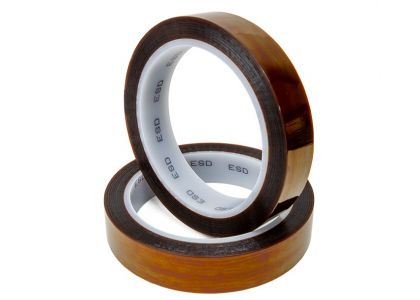
For buyers in electronics, 3D printing, aerospace, and automotive sectors, selecting the right Kapton tape (also known as polyimide masking tape) is critical. Beyond its famed temperature resistance (from –269℃ to 400℃), procurement teams must evaluate ESD‑safe variants, adhesive performance, supplier reliability, and cost efficiency.
This guide equips you with a step-by-step framework to:
Define your technical requirements (ESD safety, mil thickness, adhesive type)
Compare 2 mil polyimide tape vs other grades
Vet polyimide electrical insulation tape suppliers
Negotiate volume pricing and delivery terms
Confirm operating temperature range of your process (e.g., PCB reflow vs powder coating).
Specify minimum dielectric breakdown voltage (e.g., UL 510 ratings).
Choose Kapton tape ESD safe variants certified to dissipate static.
Ensure compatibility with cleaning solvents and flux residues.
| Thickness (mil) | Flexibility | Applications |
|---|---|---|
| 1.0 mil | High conformability | Fine masking, delicate parts |
| 2.0 mil | Balanced strength–flexibility | General PCB masking, 3D printing beds |
| 3–4 mil | Maximum durability | High-wear conveyor belts, industrial ovens |
Look for ISO 9001, UL or TUV certifications.
Request tensile, peel, and dielectric test reports.
Assess lead times: domestic vs. overseas production.
Check minimum order quantities (MOQ) and stocking options.
Compare per‑roll pricing across 1 mil and 2 mil grades.
Factor in shipping, tariffs, and bulk discounts.
Verify polyimide electrical insulation tape performance during reflow.
Sample-test on your PCB oven to ensure no residue or adhesion loss.
Use polyimide masking tape on build plates to reduce warping.
Confirm tape removal at 200–260℃ without tearing.
Specify flame‑retardant, low‑outgassing formulations.
Request batch traceability for aerospace compliance.
Lock in multi‑year price agreements tied to raw polyimide resin costs.
Establish safety stock levels (e.g., 2–3 months’ usage) for critical tape grades.
Implement vendor‑managed inventory (VMI) for seamless replenishment.
Q1: When is 2 mil polyimide tape preferable over 1 mil?
A: Choose 2 mil for balanced strength and flexibility in standard PCB and masking tasks; use 1 mil for ultra‑fine work.
Q2: How do I confirm a Kapton tape is ESD safe?
A: Check supplier’s datasheet for surface resistivity (<10^12 Ω per ANSI/ESD S11.11).
Q3: What lead times can I expect for custom‑width polyimide tape orders?
A: Domestic suppliers: 2–4 weeks; offshore: 4–6 weeks, plus shipping.
Q4: Can I use polyimide tape for both masking and insulation?
A: Yes—specify low‑residue adhesives and confirm dielectric performance.
By integrating these procurement best practices—from defining kapton tape temperature resistance requirements to vetting suppliers of polyimide electrical insulation tape—you’ll secure reliable, cost-effective tape solutions. Engage with manufacturers early, test samples under your process conditions, and negotiate terms that align inventory with production demand.
With the right polyimide masking tape in place, your operations will benefit from reduced rework, consistent thermal protection, and streamlined supply chain management.